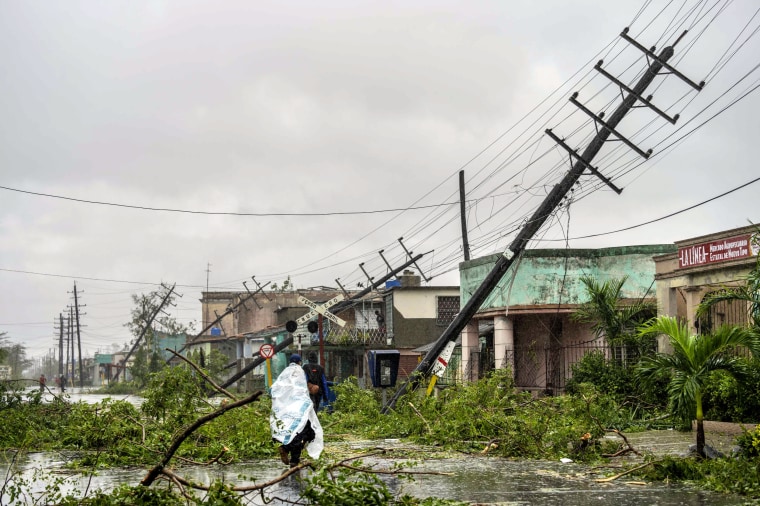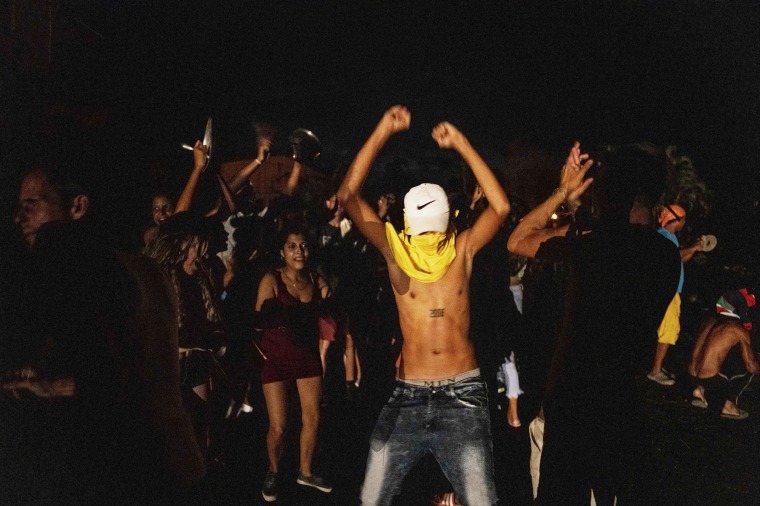Protests erupted in Cuba Thursday night as most of the island endured nearly three full days without power due the damage caused by Hurricane Ian.
Small groups of people took to the streets and banged on pots in different parts of Havana and other provinces throughout the island.
On Friday morning, the Energy and Mines Ministry said that 60% of the capital, Havana, and 88% of the Mayabeque province had power restored. But most of the country of about 11 million was still without electricity.
In the western part of the island, which took a direct hit Tuesday, Cuba’s power company is unable to say when the lights could be back on. Winds of 125 miles per hour ripped down thousands of electric poles, high tension towers and transformers.

Internet connections were disrupted across the island between 9 p.m. Thursday and 3 a.m. Friday. Government officials have not said what caused the outage. But mobile phones and landlines have been unreliable since the country’s power grid collapsed.
“I think protesting is a right,” Luis Antonio Torres, head of the Communist Party of Havana, said during a televised interview Friday. “But it’s a right when the state and the government are not doing their jobs.”
He said the protests took time away from officials who should have been assisting with the electrical problems.
“We don’t have power here yet and the people are desperate,” said a 57-year-old resident of the Arroyo Naranjo area of Havana, who asked to remain anonymous.
“The little food we have is going bad. In the streets people are openly complaining,” she said. “The situation is unbearable.”
Protests in Cuba are rare but since the historic demonstrations of July 2021, which were followed by a heavy crackdown, smaller scale protests have popped up in different parts of the country over the lack of food, medicine and power.

Before the storm, Cubans were already dealing with an economic crisis and problems such as power outages lasting over eight hours and long lines to buy food and other goods. The island’s economy took a blow in recent years with tightened U.S. sanctions, the effects of the pandemic on tourism and government inefficiency. The island is still reeling from a deadly fire at large oil storage facilities last month. The number Cubans leaving the island has reached record levels.
Hurricane Ian knocked out power to the entire island when it barreled into Cuba’s western tip on Tuesday. The massive storm went on to batter parts of Florida, where at least 14 people have been killed.
In Cuba, Ian is responsible for the death of three people, according to official figures. It destroyed many agricultural fields, including some of the country’s most important tobacco farms.
Yenny Leal, a resident of the Santo Suarez neighborhood of Havana, said she was very happy the power was back on at her house, after losing power at 9 a.m. on Tuesday.
“I told my friends so they can put food in my refrigerator and charge their cellphones,” said Leal. “I am preparing rice with chicken for my friends now. I don’t have a lot of chicken, but I have a lot of love.”
Carmen Sesin reported from Miami and NBC News producer Orlando Matos reported from Havana.
Follow NBC Latino on Facebook, Twitter and Instagram.
